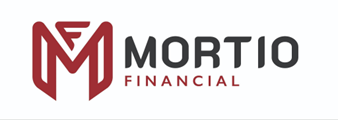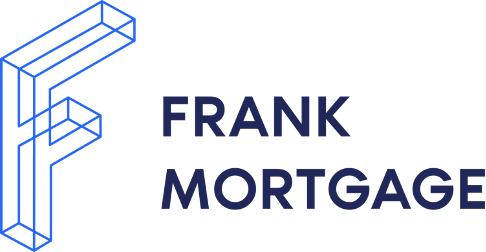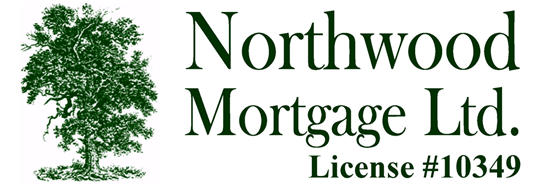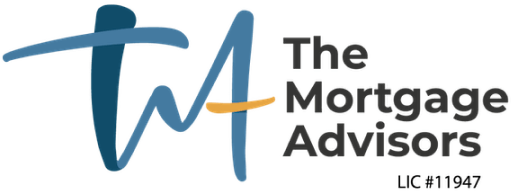Best Mortgage Rates in Saskatchewan
Compare Saskatchewan mortgage interest rates from top lenders & save on your mortgage.
Today's Best Mortgage Rates in Saskatchwan
Evaluate Saskatchwan’s best mortgage rates in one place. You can compare the most current mortgage rates and monthly payments from 175+ banks and lenders across Saskatchwan.
Rates are based on an average mortgage of $500,000 and subject to change based on filter criteria.
| Lender
|
Insured
|
Insurable
|
Uninsured
|
|---|---|---|---|
|
Mortio Financial Corp
|
3.99%
$2,627.39 / month
|
4.24%
$2,695.56 / month
|
4.14%
$2,668.19 / month
|
|
Frank Mortgage
|
4.09%
$2,654.55 / month
|
4.19%
$2,681.85 / month
|
4.09%
$2,654.55 / month
|
|
Northwood Mortgage Ltd.
|
4.14%
$2,668.19 / month
|
4.24%
$2,695.56 / month
|
4.24%
$2,695.56 / month
|
|
Mortgage Outlet - Russel Inspektor
|
4.29%
$2,709.29 / month
|
4.29%
$2,709.29 / month
|
4.29%
$2,709.29 / month
|
|
Innovation Federal Credit Union
|
4.39%
$2,736.87 / month
|
4.39%
$2,736.87 / month
|
4.39%
$2,736.87 / month
|
|
True North Mortgage
|
2.99%
$2,363.66 / month
|
2.99%
$2,363.66 / month
|
2.99%
$2,363.66 / month
|
|
The Mortgage Advisors
|
3.87%
$2,594.98 / month
|
3.87%
$2,594.98 / month
|
3.87%
$2,594.98 / month
|
|
Nesto
|
3.91%
$2,605.76 / month
|
3.91%
$2,605.76 / month
|
3.91%
$2,605.76 / month
|
|
MortgagestoGo
|
3.94%
$2,613.86 / month
|
3.94%
$2,613.86 / month
|
3.94%
$2,613.86 / month
|
|
Hypotheca
|
3.94%
$2,613.86 / month
|
3.94%
$2,613.86 / month
|
3.94%
$2,613.86 / month
|
|
One Link Mortgage & Financial
|
3.95%
$2,616.57 / month
|
3.95%
$2,616.57 / month
|
3.95%
$2,616.57 / month
|
|
Northern Birch Credit Union
|
3.99%
$2,627.39 / month
|
3.99%
$2,627.39 / month
|
3.99%
$2,627.39 / month
|
|
The Police Credit Union
|
3.99%
$2,627.39 / month
|
3.99%
$2,627.39 / month
|
3.99%
$2,627.39 / month
|
|
Monster Mortgage
|
3.99%
$2,627.39 / month
|
3.99%
$2,627.39 / month
|
3.99%
$2,627.39 / month
|
|
City Wide Financial Corp
|
3.99%
$2,627.39 / month
|
3.99%
$2,627.39 / month
|
3.99%
$2,627.39 / month
|
|
Sudbury Credit Union
|
3.99%
$2,627.39 / month
|
3.99%
$2,627.39 / month
|
3.99%
$2,627.39 / month
|
|
Mainstreet Credit Union
|
3.99%
$2,627.39 / month
|
3.99%
$2,627.39 / month
|
3.99%
$2,627.39 / month
|
|
East Coast Mortgage Brokers
|
4%
$2,630.10 / month
|
4%
$2,630.10 / month
|
4%
$2,630.10 / month
|
|
Prospera Credit Union
|
4.04%
$2,640.95 / month
|
4.04%
$2,640.95 / month
|
4.04%
$2,640.95 / month
|
Today's Best Mortgage Rates in Saskatchewan
Evaluate all of Saskatchewan's best mortgage rates in one place. Rates.cas Rate Matrix lets you compare pricing for all key mortgage types and terms.
Rates are based on an average mortgage of $500,000 and subject to change based on filter criteria.
Updated 20:30 on Jul 25, 2025| Placeholder |
Insured
The rates in this column apply to borrowers who have purchased mortgage default insurance.
This is required when you purchase a home with less than a 20% down payment.
The home must be owner-occupied and the amortization must be 25 years or less.
|
80% LTV
The rates in this column apply to mortgage amounts between 65.01% and 80% of the property value. The home must be owner-occupied and have an amortization of 25 years or less. You must have purchased it for less than $1 million. These rates are not available on refinances. Refinances require "Uninsured" rates.
|
65% LTV
The rates in this column apply to mortgage amounts that are 65% of the property value or less. The home must be owner-occupied and have an amortization of 25 years or less. You must have purchased it for less than $1 million. These rates are not available on refinances. Refinances require "Uninsured" rates.
|
Uninsured
The rates in this column apply to purchases over $1 million, refinances and amortizations over 25 years. More info on the differences between insured and uninsured rates.
|
Bank Rate
Bank Rate is the mortgage interest rate posted by the big banks in Canada.
|
|---|---|---|---|---|---|
| 1-year fixed rate | 4.84% | 5.29% | 5.29% | 5.59% |
5.49%
|
| 2-years fixed rate | 4.04% | 4.69% | 4.39% | 4.39% |
4.79%
|
| 3-years fixed rate | 4.14% | 4.02% | 4.02% | 4.24% |
4.29%
|
| 4-years fixed rate | 4.09% | 4.04% | 4.04% | 4.44% |
4.39%
|
| 5-years fixed rate | 3.91% | 3.91% | 3.99% | 3.91% |
4.09%
|
| 7-years fixed rate | 5.14% | 5.00% | 5.00% | 5.19% |
5.00%
|
| 10-years fixed rate | 5.24% | 5.24% | 5.24% | 5.29% |
6.09%
|
| 3-years variable rate | 4.15% | 4.30% | 4.30% | 4.40% |
6.35%
|
| 5-years variable rate | 4.05% | 4.05% | 4.30% | 4.05% |
4.25%
|
| HELOC rate | N/A | N/A | N/A | N/A |
N/A
|
| Stress Test | 5.25% | 5.25% | 5.25% | 5.25% |
N/A
|
Today's Headline
Ask the Mortgage Expert: Why this could be your window of opportunity into Canadian real estate
Predicting when the absolute bottom will come is like catching a falling knife. But according to mortgage broker and resident expert Steve Garganis, what we have now is a market that is taking a breath, where genuine buyers have a real advantage.
Read moreJul.16.2025
Saskatchewan mortgage rate market
How to find the best mortgage rates in Saskatchewan.
While the Bank of Canada may still be in rate-raising mode, consumers would be wise to shop around for the best Saskatchewan mortgage rates possible.
- Usings sites like Rates.ca is a great first start as it provides up-to-date comparisons and can connect you to a brokerage at the click of a button.
- Talk to your real estate agent about options that suit your specific needs and financing.
- Speak to your current bank or lender if you have one to see how they can assist you and if they will offer the best mortgage rates in Manitoba.
- In general, the better your credit, the more likely you will find the best mortgage rates in Manitoba. So, do what you can to improve your credit score by paying off credit card balances and other personal debts, to the extent you can.
- The interest rate is important, but there’s more to compare. Is there a prepayment penalty if you decide to refinance at some point? What are the total closing costs? Closing costs generally amount to 2% to 5% of the price of the home. If your home costs $150,000, expect to pay $3,000 to $7,500 in costs. That’s a big range, so it it would be wise of you to see what a lender typically charges.
How mortgages in Saskatchewan are regulated
Mortgage regulation in Saskatchewan is handled at the provincial level and overseen by The Mortgage Brokerages and Mortgage Administrators Act (MBMA Act).
The MBMA Act and Regulations came into force on October 1, 2010. The MBMA Act and the MBMA Regulations provide the legislative framework for the regulation of mortgage brokerages, brokers, associates and mortgage administrators in Saskatchewan. Every person carrying on the business of brokering or administering mortgages in Saskatchewan is required to comply with the Act.
There are four licence types under the Act:
- A mortgage brokerage is a corporation, partnership or sole proprietorship that:
- Solicits another person to obtain a mortgage loan or to make an investment in a mortgage, but only if the soliciting is done on behalf of another person;
- Negotiates or arranges a mortgage loan or an investment in a mortgage on behalf of another person;
- Provides advice to a person with respect to the appropriateness of obtaining a particular mortgage loan; or, making a particular investment in a mortgage.
- A broker is an individual who brokers mortgages on behalf of a mortgage brokerage and has the education and experience necessary to supervise an associate.
- A mortgage associate is an individual who brokers mortgages on behalf of a mortgage brokerage.
- A mortgage administrator is a corporation that:
- Receives payments made by a borrower and remits those payments to the investor; or
- Monitors the performance of a borrower with respect to his or her obligations under the mortgage
Saskatchewan mortgage performance
| Quarter | Mortgages | Mortgages in arrears | Mortgages in arrears (%) |
|---|---|---|---|
| Q2 2022 | 132,868 | 803 | 0.60% |
| Q1 2022 | 132,754 | 816 | 0.61% |
| Q4 2021 | 132,851 | 810 | 0.61% |
| Q3 2021 | 132,575 | 871 | 0.66% |
| Q2 2021 | 132,179 | 955 | 0.72% |
| Q1 2021 | 131,762 | 1,026 | 0.78% |
| Q4 2020 | 131,961 | 1,056 | 0.80% |
| Q3 2020 | 131,100 | 1,134 | 0.86% |
| Q2 2020 | 130,526 | 1,213 | 0.93% |
| Q1 2020 | 130,334 | 1,175 | 0.90% |
| Q4 2019 | 130,352 | 1,138 | 0.87% |
| Q3 2019 | 130,262 | 1,112 | 0.85% |
| Q2 2019 | 130,047 | 1,105 | 0.85% |
| Q1 2019 | 130,304 | 1,114 | 0.86% |
| Q4 2018 | 130,330 | 1,072 | 0.82% |
| Q3 2018 | 130,350 | 1,050 | 0.81% |
| Q2 2018 | 130,337 | 1,022 | 0.78% |
| Q1 2018 | 130,588 | 1,016 | 0.78% |
| Q4 2017 | 130,694 | 974 | 0.75% |
| Q3 2017 | 130,343 | 964 | 0.74% |
| Q2 2017 | 129,732 | 916 | 0.71% |
| Q1 2017 | 129,345 | 898 | 0.69% |
| Q4 2016 | 129,252 | 839 | 0.65% |
| Q3 2016 | 128,480 | 783 | 0.61% |
| Q2 2016 | 128,098 | 756 | 0.59% |
| Q1 2016 | 127,901 | 716 | 0.56% |
| Q4 2015 | 127,848 | 632 | 0.49% |
| Q3 2015 | 127,142 | 552 | 0.43% |
| Q2 2015 | 125,991 | 515 | 0.41% |
| Q1 2015 | 125,572 | 507 | 0.40% |
| Q4 2014 | 125,248 | 460 | 0.37% |
| Q3 2014 | 124,684 | 409 | 0.33% |
| Q2 2014 | 123,348 | 373 | 0.30% |
| Q1 2014 | 122,561 | 384 | 0.31% |
| Q4 2013 | 121,200 | 369 | 0.30% |
| Q3 2013 | 118,560 | 369 | 0.31% |
| Q2 2013 | 117,036 | 344 | 0.29% |
| Q1 2013 | 115,808 | 351 | 0.30% |
| Q4 2012 | 115,241 | 364 | 0.32% |
| Q3 2012 | 114,162 | 367 | 0.32% |
| Q2 2012 | 112,662 | 337 | 0.30% |
| Q1 2012 | 111,376 | 374 | 0.34% |
Source: Canadian Bankers Association
Over the past 10 years, Saskatchewan homeowners have been the worst in Canada when it comes to paying mortgages on time, according to the Canadian Bankers Association.
In mid-year 2019, the province's arrears rate stood at 0.86%, the highest in the nation. CBA noted that this totalled 1,118 mortgages in arrears for three or more months out of the 130,106 extant mortgages in Saskatchewan at the time.
To compare, the national average arrears rate in that period was 0.23%. The rate was just 0.14% in BC, 0.35% in Manitoba, and 0.5% in Alberta.
Consumer demographics (younger buyers) and sustained low-interest rates in the years after the 2008-09 financial crisis, were major drivers of the phenomenon.
Saskatchewan housing market
It won’t surprise anyone to hear that year-over-year residential sales in Saskatchewan have declined. Recent interest rate hikes and spikes in inflation have caused the slow down. Year-over-year sales were down 9.2% and year-to-date they are down 9.7%.
Still, the 10-year average spread remains in positive territory with an average increase of 4.2% and year-to-date an increase of 22.4%.
New listings have remained in a down cycle both in the short-term and longer term. Listings are down to 2,494 – a decrease of 1.7% year-over-year and 8.2% year-to-date. Over a 10-year cycle the average has been a decline of 9.0% and 9.2% year-to-date.
Relatively tight conditions are supporting further price gains in the province at a time when many cities in Canada are seeing some retraction of prices. In July, the benchmark price reached $335,100, slightly higher than the previous month and over five per cent higher than levels recorded in July 2021.
Tips for first time homebuyers in Saskatchewan
First time homebuyers likely have questions given their inexperience and the complicated ins-and-outs of purchasing a home. First time homebuyers may want to consider the following tips:
- Budget: Figure out what you can comfortably afford before you look at too many “out-of-reach" options.
- Pay off debt: Deal with existing debt. If you have debts that can be paid off or paid down, look at those first to shore up your credit rating.
- Down payment: Before purchasing that first home, try to save up as much as possible for a down payment. The more you can provide, the less of a risk you are, which banks look favourably on.
- Take advantage: Use the First Time Homebuyers’ Tax Credit.
- Look at your needs today: That first home may be your forever home or it may be a starter home. Consider what your future housing needs are likely to be. It may inform the kind of home you are looking at and how much you want to spend versus save for a future purchase.
- Comparison shop: Use Rates.ca to compare mortgage rates and options for your financing needs.
Frequently asked questions about mortgages in Saskatchewan
Learn what you need to know about getting a mortgage in Saskatchewan.
How much can I save by comparing the current Saskatchewan mortgage rates?
Comparing Saskatchewan mortgage rates is the best way to save money on interest rates. Sites like Rates.ca can assist with those comparisons and expedite the mortgage approval process when you decided on the best Manitoba mortgage rate to meet your needs.
Are Saskatchewan mortgage rates higher than other provinces?
Mortgage rates in Saskatchewan and other provinces with smaller populations, are generally a little bit higher than the more populous provinces of Ontario and B.C. due to reduced lender selection and limited competition.
While you may end up with a greater mortage rate in Saskatchewan, you can still find great rates through Rates.ca – which will vary by lender. So shopping around is a must.
What is the prime interest rate in Saskatchewan?
The prime rate in Canada is 5.45%. That is due to the recent rate hikes by the Bank of Canada to stave off inflation.
What is the minimum down payment required for a mortgage in Saskatchewan?
Generally, the minimum down payment required is 5% of the home's purchase price. Recent changes to the rules now allow this down payment to be borrowed, or you must possess this minimum as either available cash resources or as a gift from a family member.


























